Term 1 Chapter 4 | 7th Maths - Inverse Proportion | 7th Maths : Term 1 Unit 4 : Direct and Inverse Proportion
Chapter: 7th Maths : Term 1 Unit 4 : Direct and Inverse Proportion
Inverse Proportion
Inverse
Proportion
Let us consider the following situation.
Situation
The following table shows the number of workers
and the number of days to finish the construction of water tank in school.

In this situation, the two quantities namely number
of workers and the number of days are related to each other. We observe that when
the number of workers increases, the number of days to finish the job decreases.
Consider the number of workers as x and
the number of days as y then we note that
the product is always the same. That is,
x ×
y = 2 × 40 = 4 × 20 = 5 × 16 = 10 × 8
Consider each of the value of x and the corresponding value of y. Their
products are all equal say xy = 80 = k
(k is a constant) and it can be expressed as xy = k (k is a constant)
If y1
and y2 are the values of y corresponding to the values of x1 and x2 of x respectively
then x1 y1 = x2 y2
(=k) x1/y1
= x2/y2 . We say that x
and y are in inverse proportion.
Think
Think of an example in real life where
two variables are inversely proportional.
Try these
1. Complete the table given below and find the type of proportion

2. Read the following examples and group them in two categories
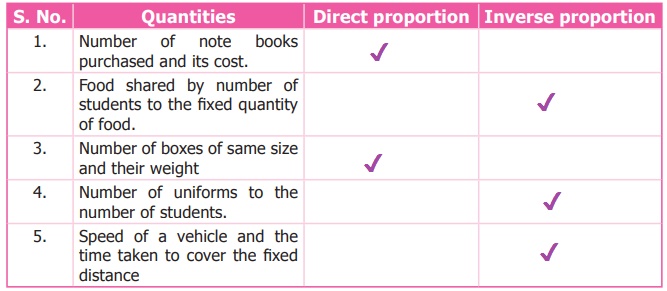
Activity
Form all possible rectangles with
area 36 sq.cm by completing the following
table.
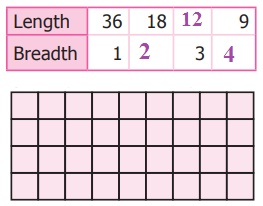
Observe and answer the following
(i) When length decreases, the breadth
(ii) When breadth increases, the length
(iii) If the length is 8 cm what will be the breadth? -Discuss.
Breadth will 4.5 cm
Extend this activity and try the same
with area 24 and 48 sq.units.
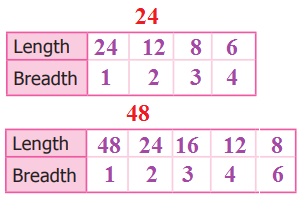
Example 4.5
60 workers can spin a bale of cotton in 7 days.
In how many days will 42 workers spin it?
Solution
Let x be
the required number of days. The decrease in number of workers lead to the increase
in number of days. (Therefore, both are in inverse proportion)
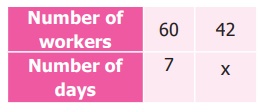
For inverse proportion x1y1 = x2y2
Hence 60 × 7 = 42 × x
42 × x =
60 × 7
x =
60×7 / 42
x =
10
In 10 days 42 workers can spin a bale of cotton.
Example 4.6
The cost of 1 box of tomato is ₹ 200.
Vendan had money to buy 13 boxes. If the cost of the box is increased to ₹ 260
then how many boxes will he buy with the same amount?
Solution
The
cost of one box = ₹ 200
Increased
cost of one box = ₹ 260
Let x be the number of boxes bought by Vendan.
As
cost of boxes increases the number of boxes decreases.
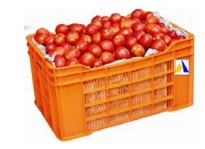
This is in inverse proportion. Therefore, x1y1 = x2y2
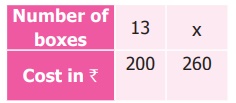
13
× 200 = x × 260
x × 260 = 13
× 200
x = [13 × 200]
/ 260
x = 10
Therefore, he can buy 10 boxes for the same amount.
Direct and indirect proportion is
very much useful in project scheduling. A project can be any work that is time bound
like building a house, construction of bridges, etc.

Related Topics